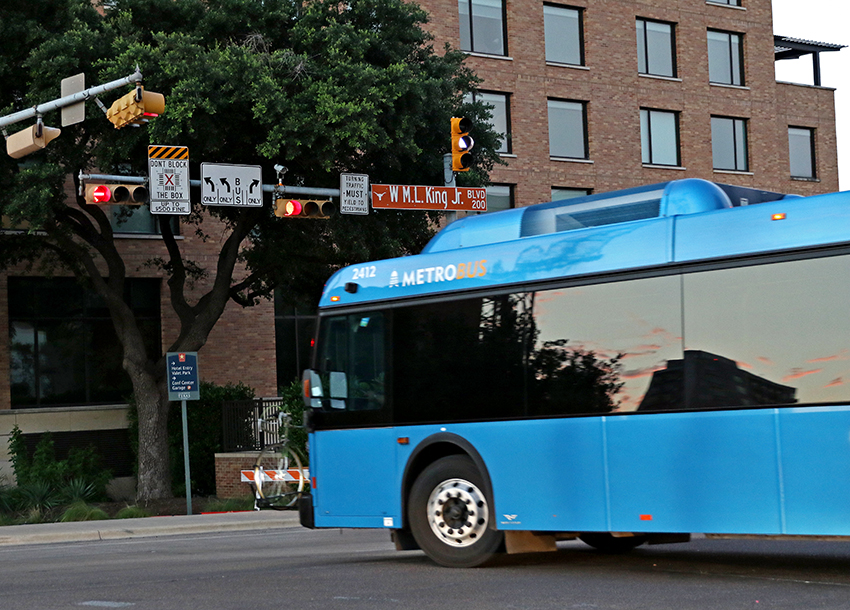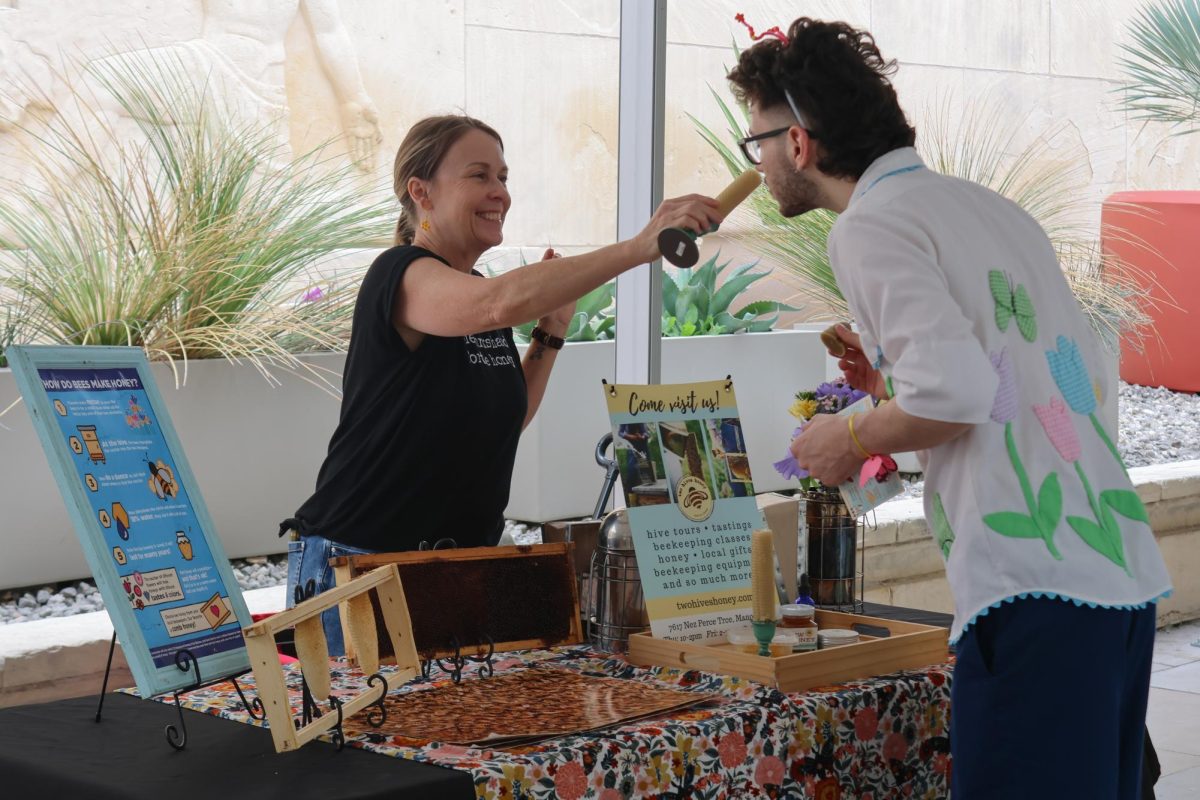- The Austin Transportation Department (ATD) began installing special transit signals on a case-by-case basis around the city, allowing buses to “jump ahead” at stoplights around town.
- The signals, called Transit Queue Jumps, were first installed in early March and currently exist in three locations around the city — one at Republic Square, the southbound intersection of Guadalupe and Fourth Street, one at Crestview Station, the southbound intersection of North Lamar and Airport Boulevard and one at the northbound intersection of MLK and Lavaca nearest to UT-Austin’s campus.
- Transit Queue Jumps are located at the far right of the intersection and turn on shortly before the regular traffic signals turn green. Three white symbols act as transit signals for buses only — a vertical bar acts as a green light, a triangle acts as a yellow light and a horizontal bar signals the end to transit-only signals and the beginning of general traffic lights.
- “Queue Jumps provide a great benefit for Capital Metro riders, enabling buses to skip ahead in traffic for faster, more reliable service,” said Mariette Hummel, communications specialist for Capital Metro. “It only makes sense to give priority to a vehicle carrying up to 80 people onboard, compared to a typical car with one or two occupants.”
- Early this year, Capital Metro brought concerns to the city of Austin about the major congestion issues facing these intersections, and the transit signal emerged as a possible solution. The most recent signal was installed at MLK and Lavaca on March 23, and while there are no definitive dates set for the installation of more signals, ATD plans to evaluate problem areas individually, working with its local partners to determine which intersections are best suited for the signal as its city partners propose possible locations.
- “To me, it seems like these signals are going to be really hard for people to get used to,” music studies sophomore Aaron Sanchez said. “People in Austin already [aren’t very smart] drivers. It’ll take some time before this actually becomes efficient.”
- ATD has followed the lead of cities such as Seattle and Ottawa, Canada, who have similar transit signals at certain intersections across their cities. In installing these signals, ATD followed guidelines recommended by the National Association of City Transportation Officials, a nonprofit association that represents large cities on transportation issues.
- “Applying the right strategies like Transit Queue Jumps to make transit more reliable helps generate greater ridership,” said Marissa Monroy, public information and marketing manager for ATD. “Ultimately, this helps to reduce demand on Austin roads and increase mobility for all Austinites.”
Transit signals ease traffic congestion at city intersections
June 24, 2016
More to Discover
Menu
Close Menu
Activate Search
Transit signals ease traffic congestion at city intersections





















